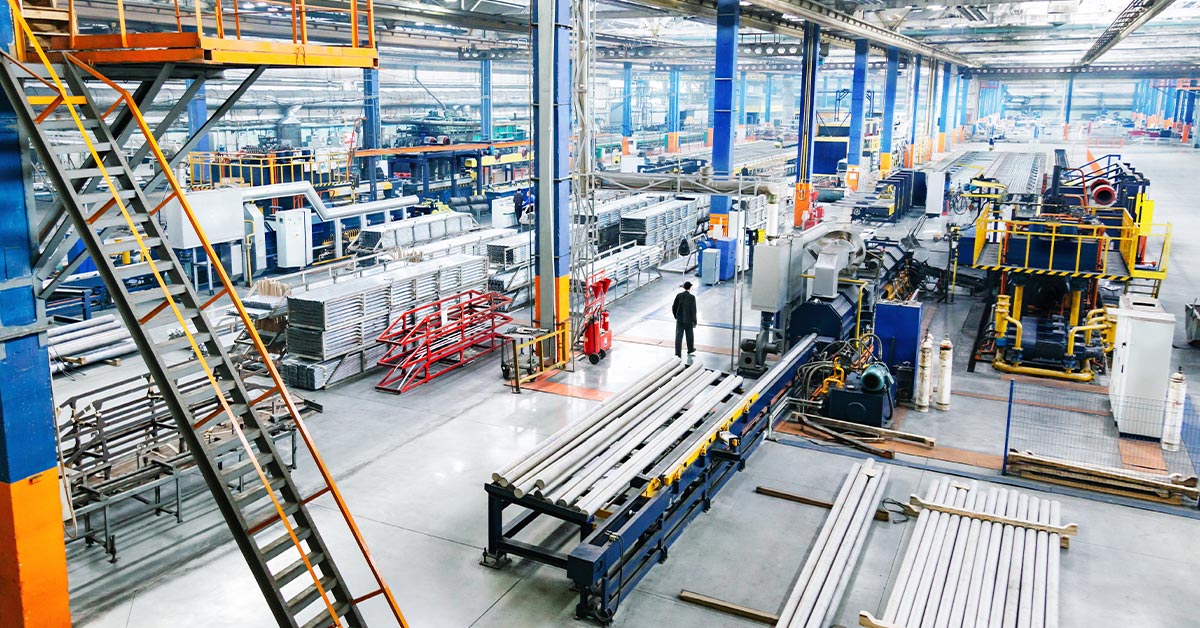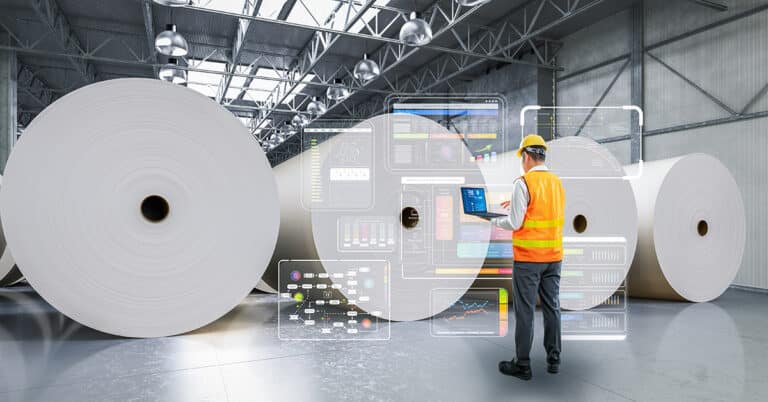It is a reality that all manufacturers face: equipment wears over time, depreciating in value each year. Equipment depreciation is important to understand as a manufacturer because it makes a business impact on several fronts:
- For tax and accounting purposes
- For making prudent maintenance decisions
- For deciding when it is time to replace a machine
Throughout the rest of this post, we will examine these points in further detail, including why it is necessary to calculate depreciation, how to calculate manufacturing equipment depreciation life, and how to use this information to make more informed decisions about maintenance.
What is equipment depreciation?
Nothing lasts forever, and that includes your heavy-duty assets. Your machinery’s depreciation life is defined as the length of time over which it is expected to lose value. This means the longer you hold onto the equipment, the less you can claim for accounting purposes or the less you may get back by selling it. This is related to but different from the equipment’s useful life, which is determined as the expected lifespan of the machine before it becomes more cost effective to replace it. Understanding how to calculate your equipment’s depreciable life as well as its useful life is critical for maximizing the value you receive from your assets and remain compliant with your financial and tax obligations.
There are several factors that play an important role in determining the depreciable life of your equipment. These include:
- Industry standards: Depending on the industry you operate in, there may be different standard depreciation periods for specific types of equipment. This can have a significant impact in determining how valuable your machinery will be after a certain period of use.
- Equipment usage: Obviously, the more your equipment is used, the more wear and tear it experiences. Machines that have been used more frequently generally will yield a lower return in terms of valuation than those that have been used less often. Establishing an effective maintenance program can mitigate these effects to a certain degree because the equipment will be in better shape.
- Technological advancements: If any new technologies have bene introduced that make certain types of equipment outdated or obsolete, they can have a tremendous effect on the value of that older machinery.
How to calculate useful life of assets and depreciation
There are several methods to determine the useful life of equipment. They are:
- IRS estimates: In IRS Publication 946, Appendix B, the IRS lays out standard useful life estimates for accounting and tax purposes.
- Manufacturer specs: OEMs may include useful life estimates as part of equipment documentation.
- Your experience and history: If you’ve owned a similar piece of equipment in the past, you can draw on that equipment’s useful life to estimate the useful life of other equipment.
Regardless of which method is used, remember that your usage, maintenance standards and processes will also play a role in the useful life of the equipment. The useful life of equipment is an important figure to have because of the role it plays in calculating the depreciation life of equipment. Depreciation is the reduction in the value of an asset year over year. It is calculated in equal annual increments over the useful life of the equipment.
To calculate depreciation, you must also know the salvage value of a piece of equipment (the dollar amount for which equipment can be sold for scrap or parts at the end of its useful life). You can calculate depreciation with the following equation: (purchase cost – salvage value) / useful life = annual depreciation amount. One way of checking your math is that if you calculate the depreciation amount correctly, the asset will reach its salvage value at the end of its useful life. Depreciation is a critical need for tax and accounting purposes. It is used in two primary ways:
- Asset values should incorporate depreciation, thus reducing the listed value each year.
- Annual depreciation is a tax write-off, reducing potential tax liability for the business.
Outside of accounting, equipment depreciation can help inform maintenance decisions, as we will explore in the next section.
Common equipment depreciation methodologies
Not all industries have the same standards when it comes to determining equipment’s depreciation life or useful life. This is due to the differing ways they use machinery as well as the unique conditions found in each workspace. As such, different industries have their own methodologies for their assessments, including:
- Declining balance method: This method accelerates depreciation in the first few years of a machine’s lifespan. This is often used for equipment that lose their value more rapidly in the early years of use.
- Units of production method: Under this methodology, depreciation is tied to the usage or output of the machinery in question. This is ideal for manufacturing equipment with varying production levels.
Equipment depreciation and maintenance considerations
Depreciation and the value of assets over time should play a role in maintenance decision-making and budget allocation. Most directly, the reason is that you may not want to invest significant maintenance resources into equipment that is at or near the end of its useful life, since this equipment will not be providing benefits from a balance sheet perspective. Other maintenance points to consider with depreciation in mind include:
- If equipment is at the end of its useful life and will no longer provide a depreciation write-off, it may be advantageous to instead replace the machine to start a new depreciation cycle.
- Depreciation accounting can become quite complicated — and costly — for equipment that does not reach its useful life span. For this reason, it is a good idea to engage in good preventive and predictive maintenance practices to help ensure you get the full value of equipment.
- Preventive maintenance and predictive maintenance costs almost always show a positive return on investment when compared with the benefits of a longer equipment life span.
- Proper maintenance can extend equipment service life far beyond that of IRS estimates. Be sure to factor in your in-house processes, expectations and history when calculating depreciation of equipment.
With this information at hand, you now have an understanding of the importance of depreciation — from an accounting standpoint as well as a maintenance perspective — and can make informed decisions based on the intersection of the two.
ATS offers a range of maintenance, factory automation integration and industrial asset management services that can help you meet and, when necessary, exceed the useful life of equipment. We also offer expertise to guide you through depreciation planning. For more information, contact us.






